The 1911 isn’t recommended by gun writers and YouTube people much anymore. I think this is because of a unwritten rule I’ve observed in the gun world that says, “if it’s not suitable for everybody, it’s not suitable for anybody.” I don’t agree with that. Nor do I agree that the 1911 is the “ultimate” handgun. The 1911 can be a viable option, but it has some serious limitations. Here are some reasons to consider the 1911 when weighing defensive handgun options.
This article contains affiliate links.
Reasons to Consider the 1911
This article will be addressed in three parts. The first part lists reasons that you may consider the 1911 for defensive purposes – reasons to add it to the list of handguns you are considering for defensive use. The second part will cover some criteria that your individual 1911 pistol should meet before going into service as a defensive handgun. And the third part will cover “reasons” that are sometimes given in favor of the 1911 that don’t actually matter – the “bad” reasons if you will.
I was compelled to write this because of a conversation I recently had about the M&P Shield Plus. I was discussing it as a potential option, especially since it’s available with the red-dot optic. This other fellow – a very knowledgeable man who I respect – started pointing out reasons it wasn’t as good as a Glock or Sig. He pointed out that the RDO version of the pistol was a Performance Center model, so it would never be as readily available to John and Jane Doe as the P365 and Glock 43/48. He’s right, but I wasn’t looking for the next Glock-killer, I was just looking for a gun for me. Whether the gun was more available to Joe Sixpack or not was somewhat irrelevant to my own search.
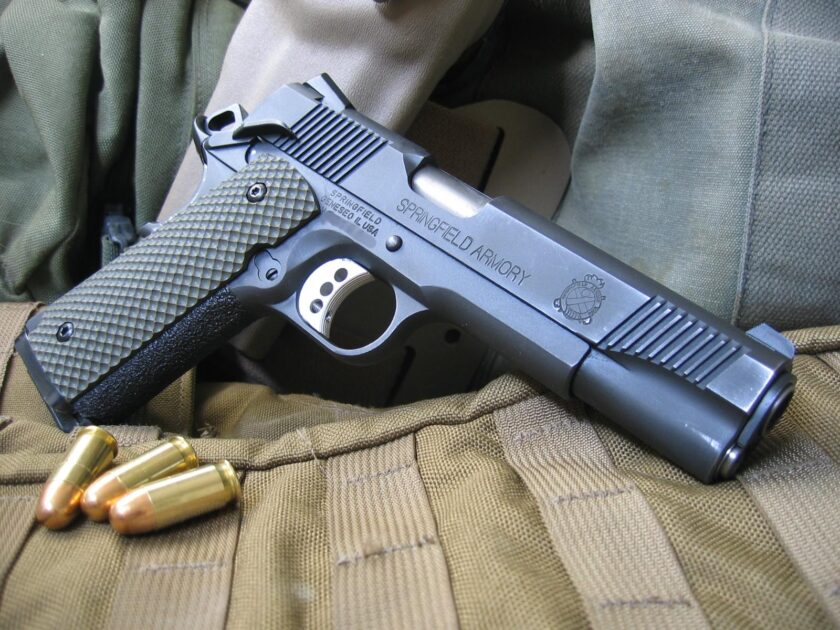
I started thinking about this on a larger scale. If the individual shooter is willing to do his or her homework (and leg- and range-work) you can make just about repeating handgun a viable option. The 1911 probably isn’t right for the masses. If you’re willing to put the energy into it, it might be right for you, though.
Part I: Reasons to Consider the 1911
It is with that idea in mind that I chose to write this article. If you are a casual gun owner that is going to purchase whatever is commonly available on your gun store shelf, then stick with the mainstream stuff. But if you are the type of guy that will go to Gunbroker with a specific manufacturer SKU then you can probably venture outside the safe harbor of Glocks, M&Ps. If you are willing to objectively and thoroughly evaluate your performance (against time and accuracy standards) and carry a gun based on the results, the 1911 might be an option for you.
Without further ado, let’s get into it. Let’s begin by discussing reasons that the 1911 might make the short list of handguns you consider for defensive purposes.
Reason #1: You Already Own One
Maybe the best, most compelling reason to carry a 1911 is that you already own one. Gun-media personalities are more than happy to convince you that whatever you own is not good enough, and that you need the latest, greatest miracle pistol. And there is something to that – progress has been made in the past 110 years. The 1911 is NOT the pinnacle of firearms development. However, is spending $600 – 1,000 on a new pistol really going to reap an equivalent benefit in safety and security?
Let’s really consider the cost of getting into a new carry gun. It’s not an inexpensive process if you follow best practices. In addition to the gun you’ll spend around a hundred bucks on a holster, that might or might not work for you. You should definitely spend some money on extra magazines. I don’t know of really any pistol with mags under $25 and some are closer to $50, so mags could easily be a couple hundred bucks. You’ll want to shoot at least a thousand rounds to ascertain reliability, and I’d recommend purchasing at least a hundred rounds of defensive ammo. All of that can easily double the cost of the gun; is it worth it if you already own a functional pistol?
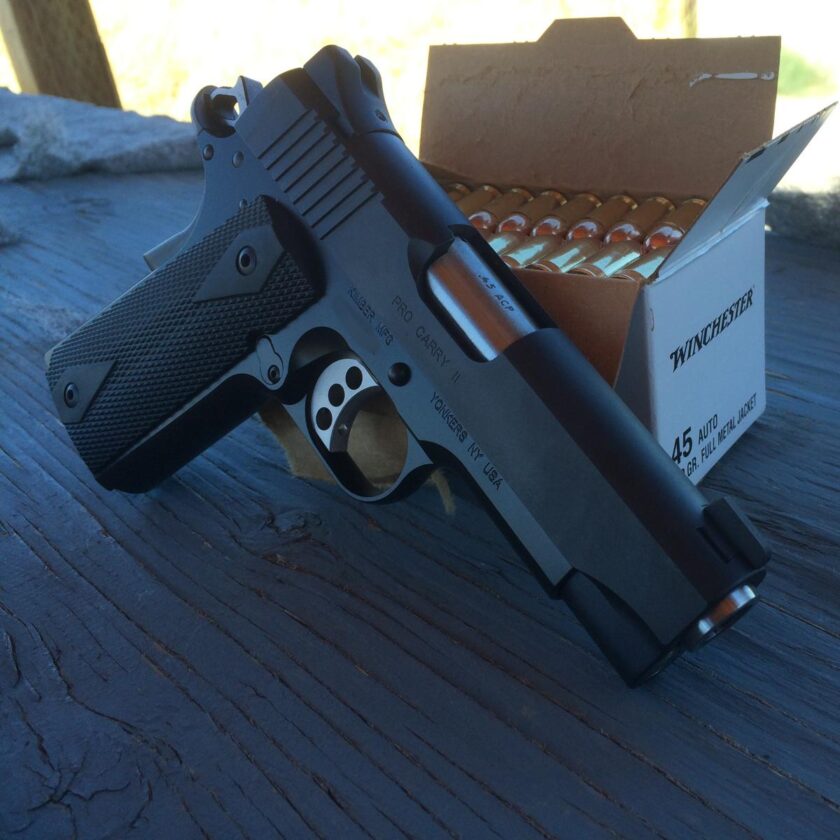
I can’t answer that for you. However, I would like to maybe give a little bit of encouragement to those dudes that carry a 1911 but are constantly told that because it’s not a Glock 19 it’s worthless. It’s not worthless. If it functions reliably, you are able to actuate the controls, you can shoot it well, and it is a feasible carry size, then I wouldn’t rush into a new carry pistol (even if does happen to be a .45). If you can afford one then go for it but don’t stretch the budget to fill a need that is largely already filled.
Instead of a new pistol and lots of new “stuff,” maybe consider spending that money on a training class, saving it to improve your financial preparedness, attending a high-performance driving or EMT course, or getting some other training that would have a bigger impact on your personal security and safety than a new gun.
Reason #2: Body of Training/Experience
Another reason to consider the 1911 might be your cumulative life experience. If you’ve spent considerable time training on the 1911 platform, it might make sense to stick to it. Developing unconscious consciousness (aka: “muscle memory”) takes a great deal of time. If you’ve already made a tremendous investment in training it might make sense to stick with what you’ve got. This is largely the position in which I find myself. My first real experience with handguns was in a multi-month CQB course, the first of several I attended. I have hundreds of hours of training and dry practice invested into the platform. That doesn’t mean I can’t run other handguns, but will I ever reach quite the same level of proficiency? I kind of doubt it.
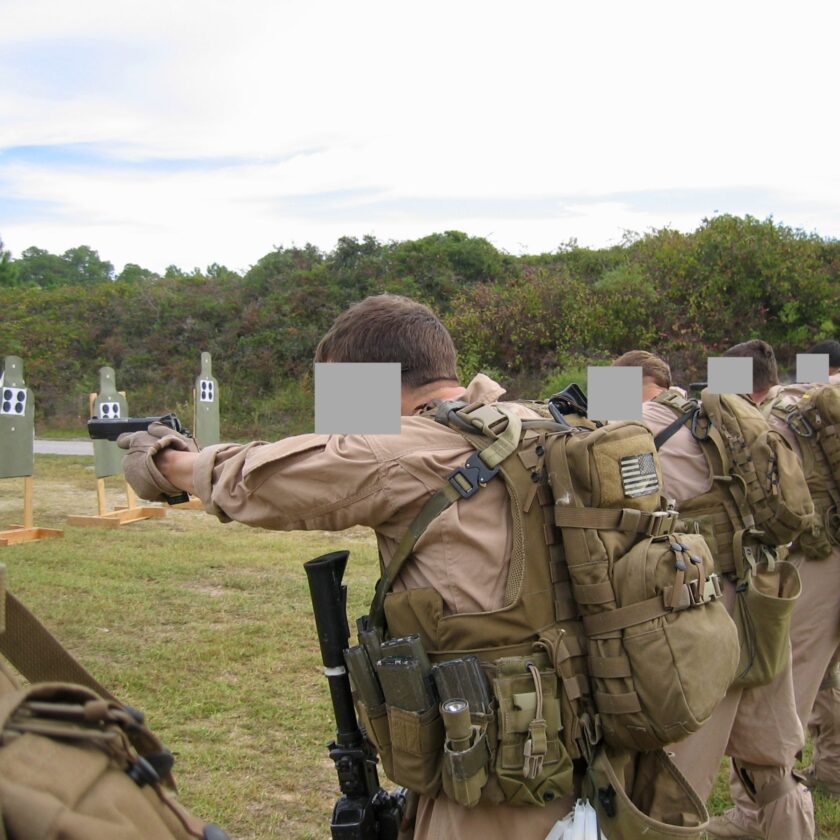
Am I suggesting that you can’t run other firearms at a very high level? Absolutely not! You certain can. However, it takes a significant effort to achieve a high-level competence. That takes time, focus, discipline, and money. If you’ve carried a 1911 on duty or have attended a bunch of training with one, then maybe the 1911 should at least be on your radar when choosing a carry gun.
A slight twist on this – and one that I don’t feel merits a second category – is if you shoot the 1911 objectively better than anything else. Objective standards including shooting drills, under similar conditions, with measured, recorded time and accuracy standards. This means shooting challenging drills, from a realistic holster setup, and grading against time and accuracy standards. If you can outperform any other suitable firearm and your 1911 is reliable, then maybe you’ve already found the “right” handgun for your defensive needs.
Reason #3: Safety
Some loathe the 1911 safeties, and some love them. Personally, I’m a big fan. With the big move (back) to appendix carry (yes, I’m aware it’s not new) some knowledgeable gun guys are moving to guns with slightly larger safety margins. Chris Baker – a guy whose opinion I value – has talked about moving to pistols with exposed hammers or manual safeties for this reason. Most recently he mentioned it in his review of the Sig P365XL. I don’t think you are being unsafe without a hammer or manual safety, but I also see Chris’ point, especially when holstering a striker-fired gun in the appendix position.
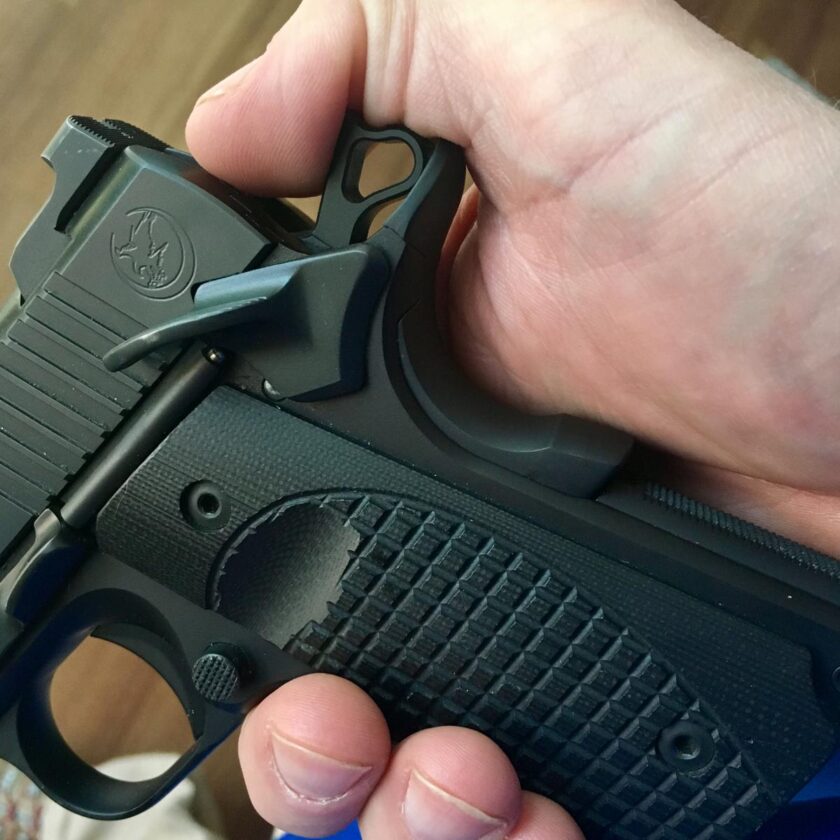
Though some are nervous about “cocked and locked” carry, the 1911 provides a very comfortable safety margin. Combined with leaning back and looking the gun into the holster, having two manual safeties and being able to control the hammer, it’s hard to imagine a much safer pistol. Again, this isn’t a desirable trait for many of you. If you are looking for a pistol with a manipulable manual safety, its hard to find one better designed that the 1911s.
Other, Lesser Reasons
There are a couple of other reasons that the 1911 might merit your attention. I consider these secondary factors as there are other pistols that will satisfy these criteria, some even better than the 1911. A carry pistol is the sum of its parts, however. If these needs are important to you they might make the 1911 worth of further exploration.
The first is small hands. I have somewhat small hands. I have difficultly with some pistols due to it. Though the might “Colt .45” is imagined to be a big ‘ol pistol, it has a fairly narrow grip frame, even in its standard configuration. My Nighthawk 1911 has a slightly thinned grip, but even in its standard configuration the 1911 grip is pretty small. Again, there are equally – or even more – capable pistols with smaller grips, but if you’re buying with small hands in mind the 1911 at least deserves a look.
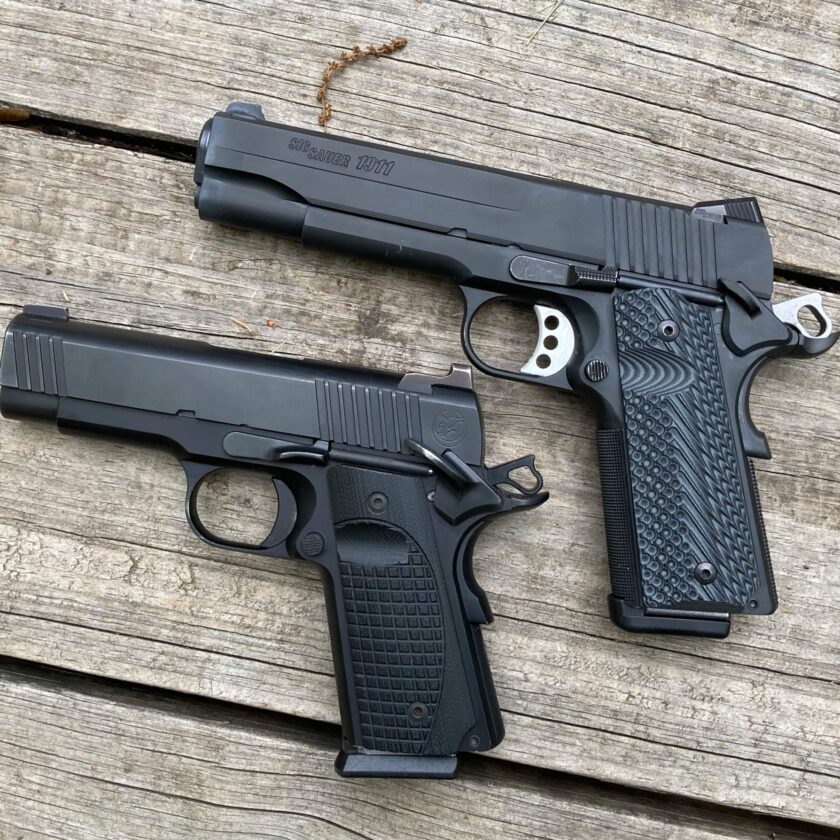
Another potential reason is capacity limitations. If you live in an area where capacity is restricted, the 1911 is a “by default” capacity-restricted design. There are plenty of other pistols out there that hold ten or fewer rounds, but again, it’s one of multitudinous factors that may play a role in your decision.
Hard Criteria if you *Do* Consider the 1911
Maybe you meet one or more of the criteria above. Or maybe you have reasons that I haven’t thought of. For whatever reason you have decided the 1911 is the gun for you. If that’s the case, here are some hard criteria before you should consider the 1911. These criteria aren’t peculiar to the 1911 platform. I would recommend them for any duty or carry pistol. I believe they merit special mention here because of the particulars of the 1911.
The first is reliability. Your defensive handgun absolutely must be reliable. Reliability is a combination of user, firearm, magazine, and ammunition. You may adjust any or all of these things until you arrive at a reliable combination. This was the case with me, with my EDC 1911; I had to adjust the magazines to Wilson Combat magazines and my reliability issues completely dried up. Some 1911s won’t run with certain ammunition. Some won’t run, period. If your 1911 is not reliable it is not a viable carry option. Period.
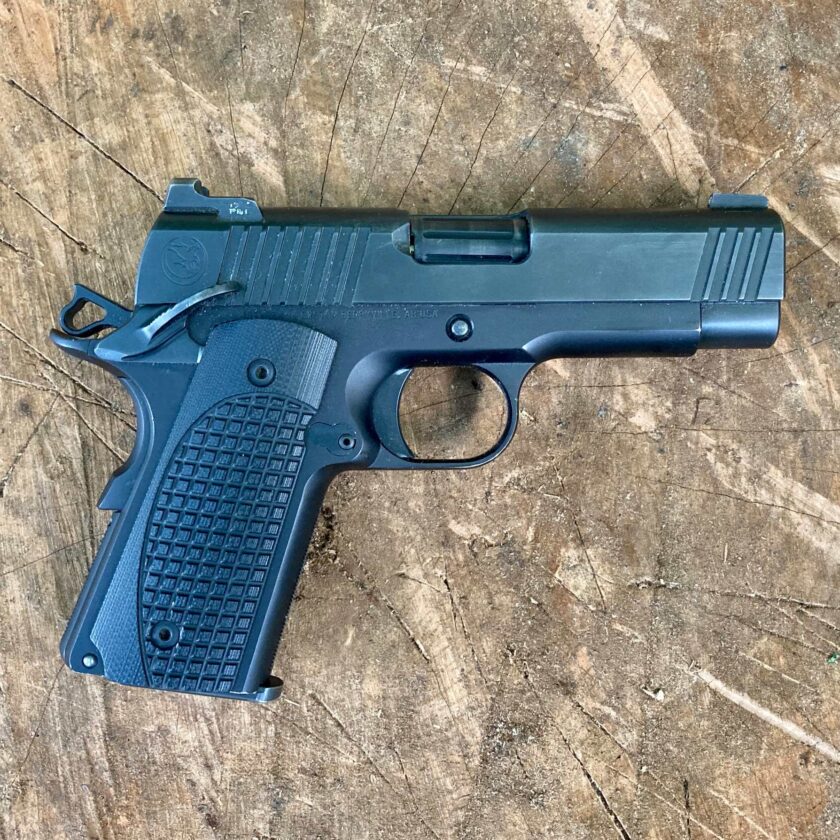
If you do much research you’ll see a lot of people saying that 1911s aren’t reliable. I have over 3,500 consecutive, malfunction-free rounds on my EDC 1911. I don’t think it gets too much more reliable than that. The problem is that influencers tend to recommend guns that tend to be reliable. That doesn’t mean individual 1911s aren’t reliable; sometimes they are. Conversely I’ve purchased a brand-new Glock 19 that had reliability problems.
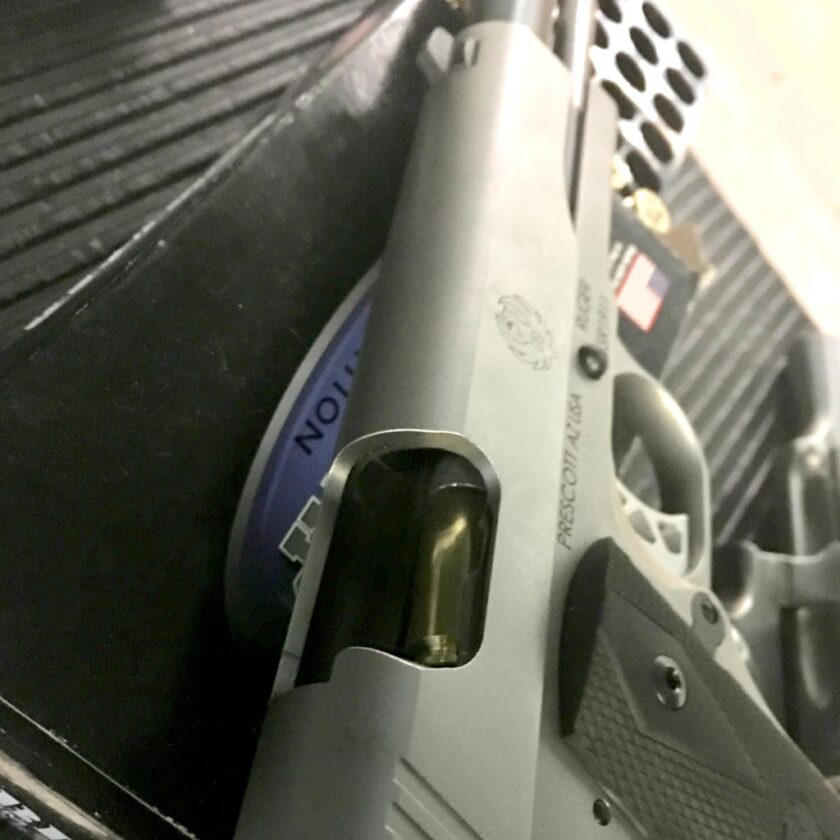
And what, exactly, is reliability? Rather than leaving it to the imagination, let’s define it. I would contend that a minimum of 1,000 consecutive, malfunction-free rounds, at least a hundred of which are your chosen carry ammunition would constitute a reliable pistol.
The next is ergonomics. The 1911 has two manual safeties that must be operated cleanly, every single time. You used to occasionally hear about someone permanently or semi-permanently disabling the grip safety on the 1911. I honestly don’t hear about that much anymore, but it’s a very, very bad idea. If you can’t operate both the grip safety and the thumb safety, in both directions (ON and OFF), then the 1911 isn’t the firearm of choice for you.
There are two things that will help: a speed bump (an extra little protrusion) on the grip safety, and an extended, ambidextrous thumb safety. The first, the speed bump means that the grip safety is deactivated by simply picking up the pistol. The extended thumb safety is easier to hit than the legacy “GI” safety. If you have a really old 1911 that you’re considering pressing into service I’d recommend having a gunsmith install these accessories at a minimum.
If you’re interested in learning more about 1911 safety management, I wrote a detailed article about it here.
Reasons NOT to Consider the 1911
Now, there are also some reasons NOT to consider the 1911. Or rather, reasons that don’t really mean much. Let’s take a look at them.
Non-Reason 1: Nostalgia
This is a common one, and it takes several forms. Maybe the most common is, “‘it’s been around for 110 years!” That’s great, but muzzleloading pistols and long-bows are “still around” too. That doesn’t make me want to carry one. Just because something is old, doesn’t mean it is good. I think there is a lot of merit to still be found in the 1911 but its age is just a fact about it, not a reason to bet your life on it.
Another version of this same statement goes something like, “if it was good enough for [Daddy, Audie Murphy, ____ ], then it’s good enough for me!” That’s not a well-reasoned argument. The reason it was good enough for guys in WWII and Vietnam is it’s what they had. Would they have chosen it if they had the choices we have now? It’s honestly kind of doubtful.
Non-Reason 2: Caliber/Cartridge, aka “Because .45!”
Let’s talk about caliber for a minute. It’s pretty common today to talk about how handgun caliber doesn’t matter. I totally agree – it really doesn’t. Pistols do a lousy job of stopping humans from doing things they are really set on doing. Usually, though, those “caliber don’t matter” arguments are geared at directing one toward the 9mm. I’m in general agreement with that; “because .45!” isn’t a good reason to move to a 1911.
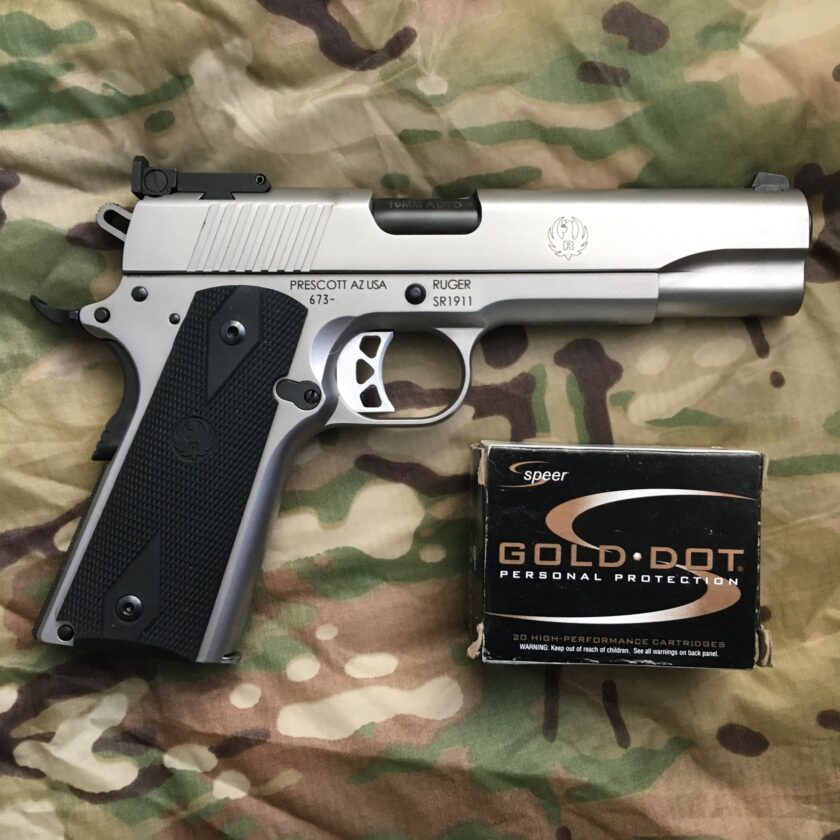
If you already own a .45 (or a .40) there’s nothing wrong with it. Sure, you’re going to be a tad bit slower – your splits will open up by a few fractions of a second, ammo is a bit more costly, and your capacity drops by a round or two. Are those things going to get you killed in the streets? I’m going to break ranks and be honest: almost certainly not. Use those 1,000 reliability-proving rounds to work on recoil management and you’ll be fine.
But “I carry a .45 because they don’t make a .46” is NOT a good reason to consider the 1911. First, plenty of other handguns come in .45 ACP. Second, a .45 (or .46, or .50) isn’t going to make up for poor shot placement. If you have a .45 and can shoot it, great, but don’t start carrying a 1911 so you can carry a “big bore” handgun.
Closing Thoughts
The 1911 is old and it’s capacity-limited. If I had to choose one handgun, sight-unseen, and bet my life on its reliability it wouldn’t be a 1911, no way, no how. But there are some really good reasons to consider the 1911 for defensive use. If you meet the criteria in section 1 – you already own one, have a ton of training on the platform, have small hands, or live in a capacity-restricted state, maybe the 1911 is for you. Assuming – of course – the 1911 in question is reliable and you can manage the safeties.






1 thought on “Reasons to Consider the 1911”
Comments are closed.